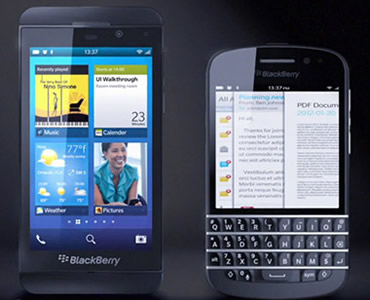BlackBerry maker Research In Motion (RIM) has set January 30th, 2013 as the date of its BlackBerry 10 launch event, which will happen simultaneously in multiple countries around the world. Although RIM has already previewed several BlackBerry 10 features, the event will mark the official launch of its new platform, as well as the unveiling of the first two BlackBerry 10 smartphones.
 Details on the smartphones and their availability will be announced at the event, but the Canadian company is aiming to make the phones available by February, according to Bloomberg. One of the BlackBerry 10 phones is widely expected to be an all-touchscreen device, and the other is expected to be a touchscreen device with QWERTY keyboard.
Details on the smartphones and their availability will be announced at the event, but the Canadian company is aiming to make the phones available by February, according to Bloomberg. One of the BlackBerry 10 phones is widely expected to be an all-touchscreen device, and the other is expected to be a touchscreen device with QWERTY keyboard.
RIM has already posted official details about BlackBerry 10, and you can see hands-on previews of prototype BlackBerry 10 L-Series and N-Series devices from CrackBerry and Pocket-Lint.
RIM also recently made its BlackBerry 10 developer platform available to all developers, and the company hopes to offer a large catalog of applications at launch, for both consumer and enterprise markets. So far, most mobile developers have not shown the BlackBerry platform anywhere near as much enthusiasm as they’ve given to Android and Apple’s iOS.
Enterprises with a strong need for security should take note that BlackBerry 10 has recently received the US government’s Federal Information Processing Standard (FIPS) 140-2 certification, which recognizes the AES 256-bit encryption used by BlackBerry devices. This marks the first time BlackBerry products have been certified ahead of their launch. RIM’s dying BlackBerry 7 platform has already cost the company government customers, as several agencies recently announced that they would be switching to Android and/or iOS.
Some key features of the new BlackBerry 10 devices already unveiled include:
BlackBerry Flow is a new user interface that lets you navigate across open applications and the BlackBerry Hub. All messages, notifications, feeds, and calendar events come into the BlackBerry Hub, and no matter what you are doing with your device, a simple gesture will let you peek into the Hub at any time.
The BlackBerry Keyboard learns how you write and adapts to how you type with the goal of enabling you to write faster and more accurately.
BlackBerry Balance enables your personal apps and information to be kept separate from work data, and you can switch from your personal to work profile with a simple gesture. The work profile is fully encrypted and secure, enabling organizations to protect their content and applications, according to RIM.
Over the last two years, RIM has gone from holding the title of third largest smartphone vendor in the world, to holding on to only a 4.3 percent market share during the third quarter — a drop from 9.6 percent a year ago. The company still had 80 million active users during the quarter that ended Sept. 1, which was an increase, RIM said when it announced its quarterly financials.
With such a precarious market share, RIM’s all-new new operating system, enterprise services, and devices could well mean life or death for struggling smartphone pioneer. “A failure will be the end of the company, so there is no room for mistakes,” says Malik Saadi, principal analyst at Informa Telecoms & Media. “But I doubt very much that consumers in developed countries will switch to BlackBerry 10 from an iPhone or Android.”





